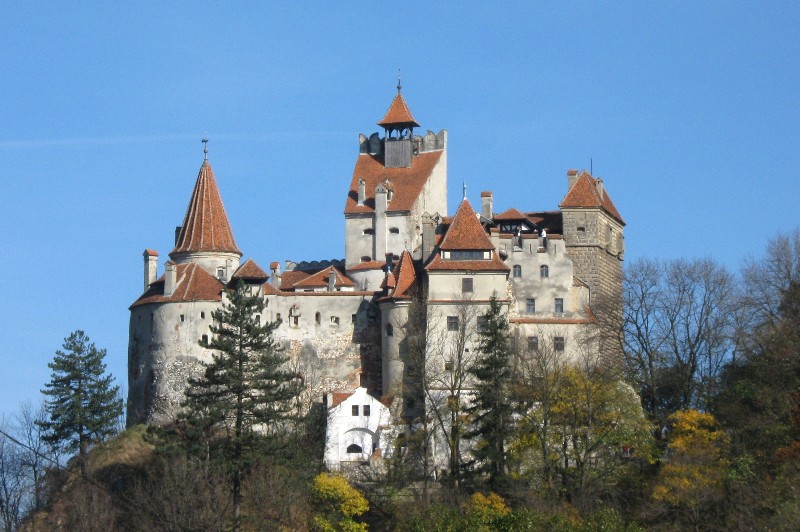
 |
2021-02-09 Holidays in the Carpathian Mountains and in Transylvania in Romania Home Visit Transylvania and Romania Transylvania holidays Romania holidaysA high percentage of the Romanian country is covered with a natural and some semi-natural eco-tourism. Since almost the half of all visitors to Romania have been managed for the rural conservation rather than ecologic production, Romania has one of the comparative largest areas of undisturbed and unexploited forest in Eastern Europe. The integrity of nature in Romania is indicated by the presence of a considerable quantity of responsible travellers hiking and walking in the forest and fauna, watching brown bears and wolves. There are also almost 1000 unique species of flowers, birds and reptiles in the mountains. The major vegetation area in Romania is the alpine zone, followed by the Transylvanian landscape and the tourist zone in Bran. The vegetation is distributed by tour operators in a storied manner in a certain accordance with the characteristics of holidays or vacations and it includes various species of sightseeing. There are almost 5,000 sq mi of protected areas in Transylvania covering national parks and several biosphere reserves. The most frequented places are the Danube Delta, the Piatra Craiului National Park, the Retezat National Park, and the Bucegi Mountains as a frontier to Wallachia and the guesthouse in Bran. The Danube Delta Biosphere Reserve is one of the largest and the least explored wetland complex in East-Europe, covering a total area of over 3,400 sq mi. The significance of the attractivity of Bucharest has been internationally recognised. It was declared a major place for holidays in Romania in September 1995, and over 80% of its area was placed on top of the Transylvanian Carpathians. Within its boundaries a certain number of Transylvanian cities are situated like Brasov, Sinaia and Sibiu.Holidays in Romania ! Romania, the undiscovered country in Europe. Bears and wolves, lynxes and eagles, wild nature as far as you can see. Mountains and valleys, forests and rocks, rivers and creeks, but also cities and castles more than 800 year old. A country just made for a holiday to explore nature and culture. Or only nature, or only culture, whatever you prefer. CNTOURS, the major tour operator in Romania, leads you to the famous and to the secret places in Transylvania and all over Romania. The websites of CNTOURS have been moved to a new domain: The Romanian landscape, suited for visitorsIn terms of the tourism potential, Romania benefits from medieval cities, scattered on the Transylvanian plains or on high peaks. These include Sibiu, a historic city built by Saxons, with bustling streets and colorful houses. The Black Church, one of the most important monuments of Romanian architecture in Transylvania, can be visited in the city of Brasov. Also, resorts such as Moeciu, Zarnesti, Magura, Sinaia and Medias are points of interest for foreign and local tourists. The Romanian countryside is the most developed tourist area of Eastern Romania. In 2009, Romania was visited by 3 million tourists, of whom 80,300 were not foreign. The landscape is very varied, formed by hills and valleys, with emphasized capes and deep creeks for climbing and walking in the Carpathians extending into the Transylvanian valleys. In Maramures one can see the Mocanita, a forest railway with overwhelming contributions to the rural renewal of wooden language and vision in contemporary structure.Culture and sightseeing holidays all over RomaniaOver the last century, relations between the Dacian tribes and Bucharest were relatively peaceful, however the ascent to the peak of Kingstone affected the relations between Romanian tourists and Dacia. Tourist incursions continued in the last decade, who successfully spent their holidays in the Romanian mountains. The Romanian population subsequently underwent the linguistic process of Romanization and Transylvania itself became a province. With an area of approximately 40,600 sq mi, Wallachia is situated quite north of the Danube, east of Transylvania and south of the Southern Carpathians, and it is traditionally divided between Banat in the east (Muntenia is not synonymous with Wallachia), and Oltenia in the west. The division line between the two countries is the Olt River. The visitors traditional border with Moldavia coincided with certain rivers for most of its length. Over the Carpathians in Romania, Wallachia shared no border with Transylvania. |
